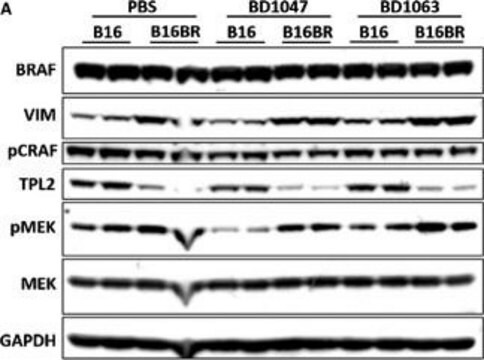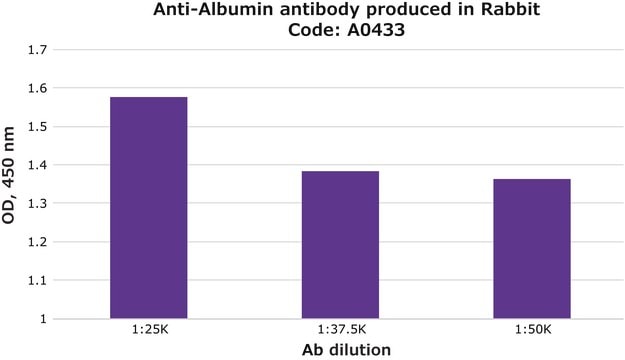ABN1649M
Anti-TMC1
serum, from rabbit
Synonyme(s) :
Transmembrane channel-like protein 1, Beethoven protein, Deafness protein, Transmembrane cochlear-expressed protein 1
About This Item
IF
WB
immunofluorescence: suitable
western blot: suitable
Produits recommandés
Source biologique
rabbit
Niveau de qualité
Forme d'anticorps
serum
Type de produit anticorps
primary antibodies
Clone
polyclonal
Espèces réactives
mouse, monkey
Conditionnement
antibody small pack of 25 μL
Technique(s)
immunocytochemistry: suitable
immunofluorescence: suitable
western blot: suitable
Isotype
IgG
Numéro d'accès NCBI
Numéro d'accès UniProt
Modification post-traductionnelle de la cible
unmodified
Informations sur le gène
mouse ... Tmc1(13409)
Description générale
Spécificité
Immunogène
Application
Immunofluorescence Analysis: A representative lot detected TMC1 in P9 mouse outer hair cells (OHCs) (Kurima, K., et. al. (2015). Cell Rep. 12(10):1606-17).
Western Blotting Analysis: A representative lot detected TMC1 in COS-7 cells (Labay, V., et. al. (2010). Biochemistry. 49(39):8592-8).
Western Blotting Analysis: A 1:1,000 dilution from a representative lot detected TMC1 in HEK293 cells transiently transfected with Fugene and TMCx-cherry cDNAs (Courtesy of Dr. Angela Ballesteros).
Immunofluorescence Analysis: A representative lot detected TMC1 in COS-7 transfected cells expressing TMC1-GFP (Courtesy of Dr. Angela Ballesteros).
Neuroscience
Qualité
Western Blotting Analysis: A 1:500 dilution of this antibody detected TMC1 in 10 µg of mouse retinal tissue lysate.
Description de la cible
Forme physique
Stockage et stabilité
Autres remarques
Clause de non-responsabilité
Vous ne trouvez pas le bon produit ?
Essayez notre Outil de sélection de produits.
Code de la classe de stockage
12 - Non Combustible Liquids
Classe de danger pour l'eau (WGK)
WGK 1
Point d'éclair (°F)
Not applicable
Point d'éclair (°C)
Not applicable
Certificats d'analyse (COA)
Recherchez un Certificats d'analyse (COA) en saisissant le numéro de lot du produit. Les numéros de lot figurent sur l'étiquette du produit après les mots "Lot" ou "Batch".
Déjà en possession de ce produit ?
Retrouvez la documentation relative aux produits que vous avez récemment achetés dans la Bibliothèque de documents.
Notre équipe de scientifiques dispose d'une expérience dans tous les secteurs de la recherche, notamment en sciences de la vie, science des matériaux, synthèse chimique, chromatographie, analyse et dans de nombreux autres domaines..
Contacter notre Service technique







